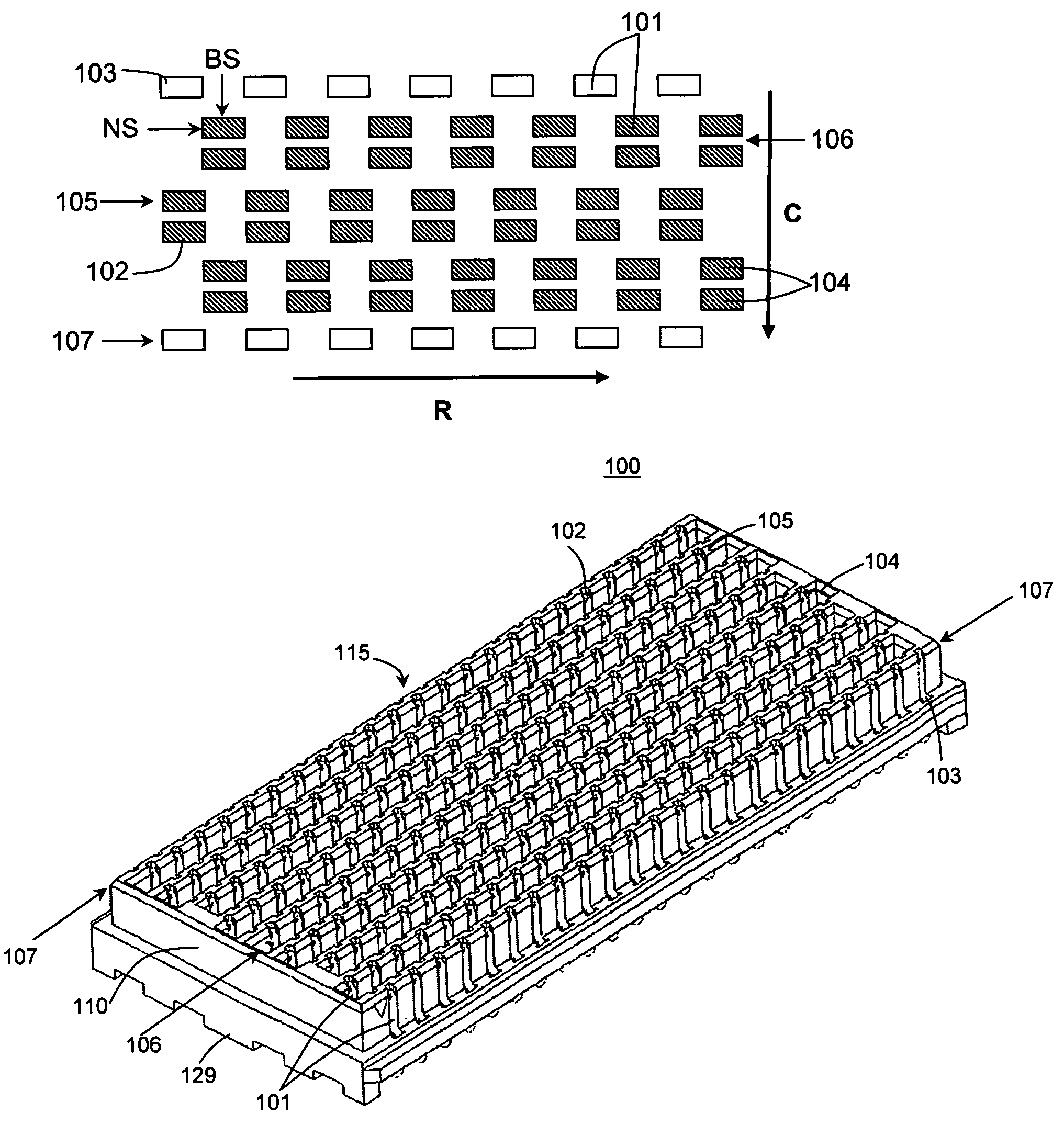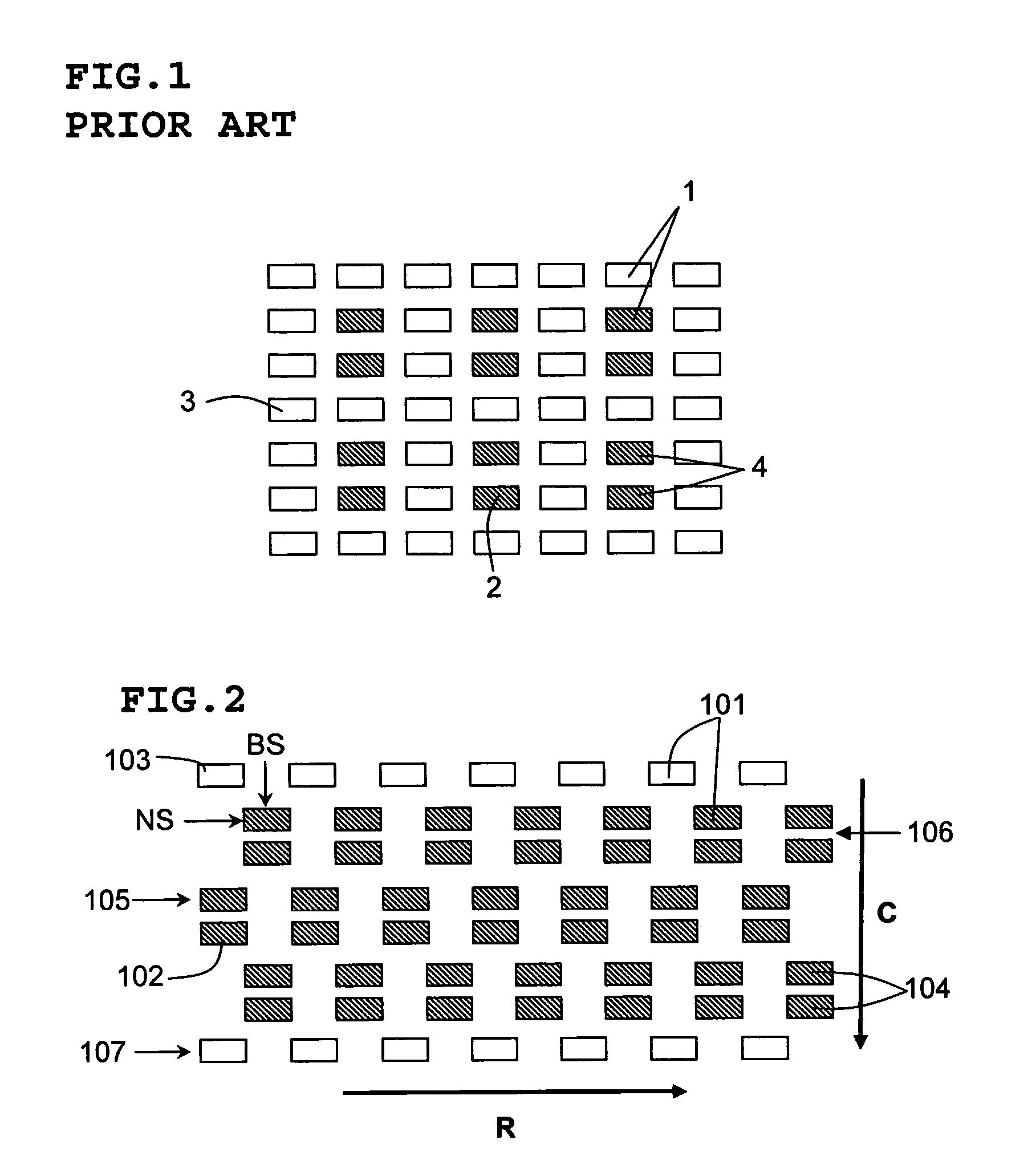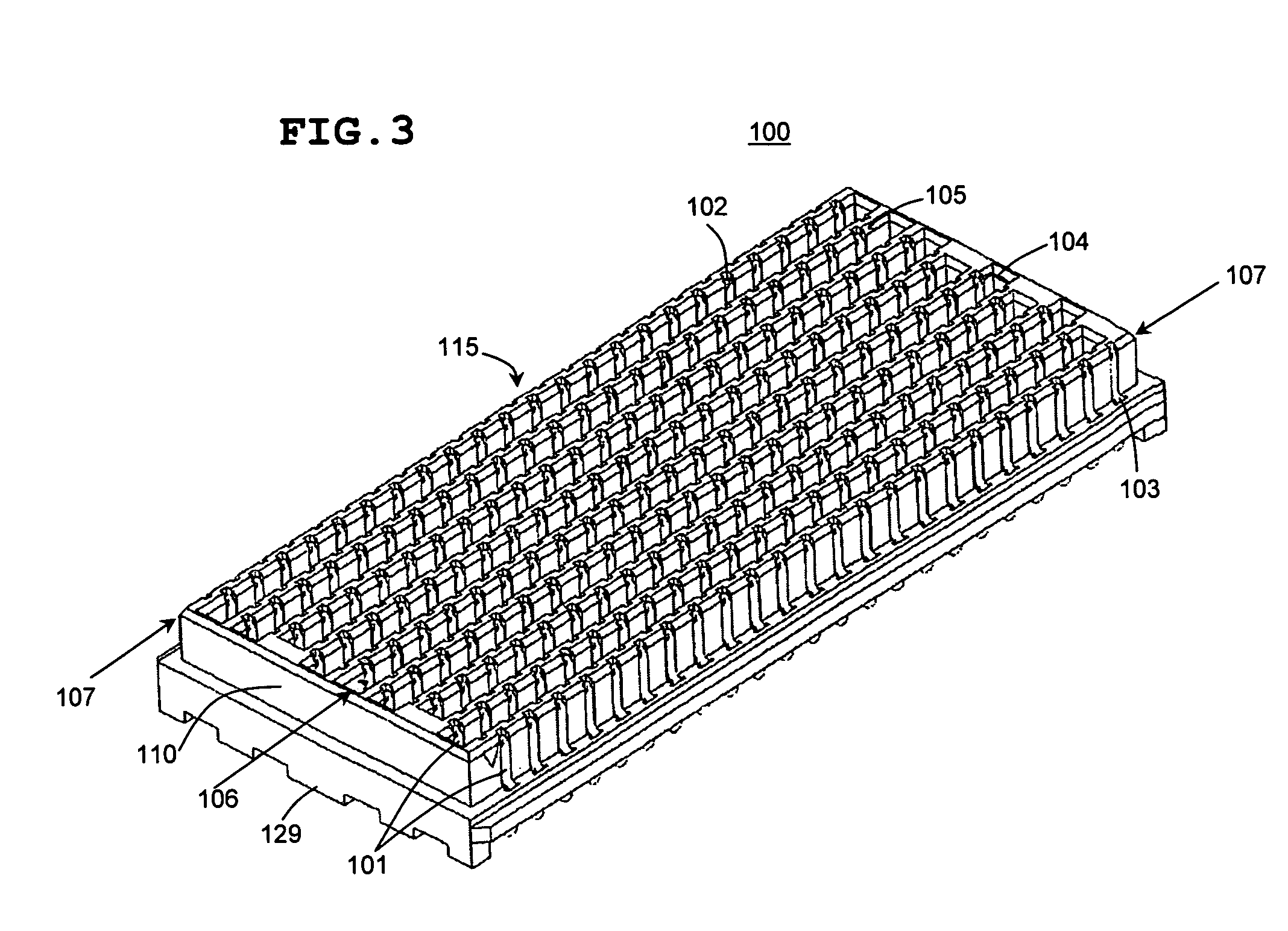Array connector having improved electrical characteristics and increased signal pins with decreased ground pins
a technology of electrical characteristics and signal pins, applied in the direction of coupling device connections, coupling contact member materials, coupling protection earth/shielding arrangements, etc., can solve the problems of reducing the number of signal pins that can be present in the connector, increasing the size of the connector, and affecting the electrical characteristics of the connector, so as to improve the electrical characteristics, reduce cross-talk, and improve the electrical characteristics
- Summary
- Abstract
- Description
- Claims
- Application Information
AI Technical Summary
Benefits of technology
Problems solved by technology
Method used
Image
Examples
Embodiment Construction
[0053]FIGS. 2, 3, 4, and 5 show an electrical connector 100 according to a preferred embodiment of the present invention. The electrical connector 100 includes a connector body 110 having a plurality of rows of pins 101.
[0054]It should be noted that the preferred embodiment shown in FIGS. 2–5 is preferably a differential pair array connector, but other connectors such as a single ended array connector or other types of connectors are possible with the present invention.
[0055]As seen in FIG. 2, an electrical connector 100 includes a plurality of the pins 101, which include signal pins 102 and ground pins 103, described in more detail below.
[0056]With respect to the physical aspects and structure of the signal pins 102 and ground pins 103, it is preferred that the signal pins 102 and ground pins 103 have the same configuration (e.g., size, shape, material composition, etc.). However, it is possible to make the signal pins 102 and ground pins 103 to have different configurations.
[0057]...
PUM
 Login to View More
Login to View More Abstract
Description
Claims
Application Information
 Login to View More
Login to View More - R&D
- Intellectual Property
- Life Sciences
- Materials
- Tech Scout
- Unparalleled Data Quality
- Higher Quality Content
- 60% Fewer Hallucinations
Browse by: Latest US Patents, China's latest patents, Technical Efficacy Thesaurus, Application Domain, Technology Topic, Popular Technical Reports.
© 2025 PatSnap. All rights reserved.Legal|Privacy policy|Modern Slavery Act Transparency Statement|Sitemap|About US| Contact US: help@patsnap.com



